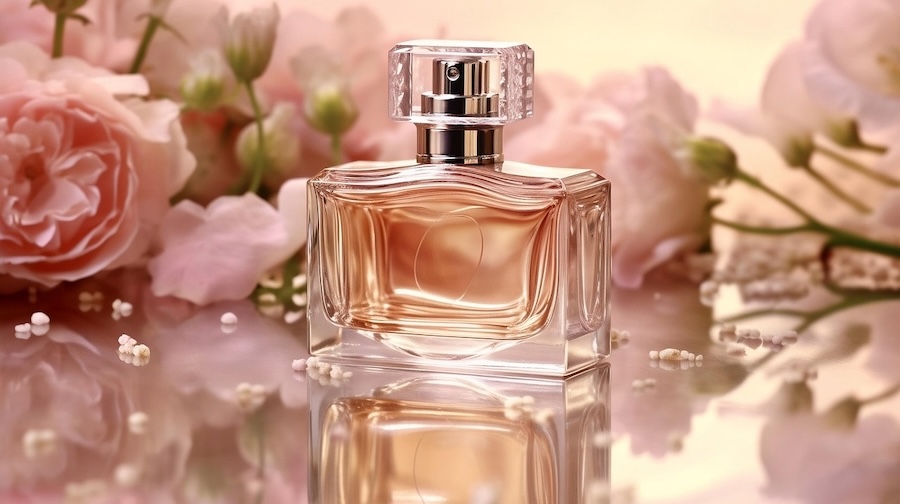So, you’ve got a few perfumes you like. Maybe even love. But what if I told you that some of your favorite fragrances could be even better—together?
Enter perfume layering. We know you’ve thought about it. Maybe even flirted with the idea. Or tried it. That’s all good.
Now, before you panic: no, this doesn’t mean walking around smelling like a department store beauty aisle exploded on you. If that’s happened to you, relax, we’re gonna solve that now. Perfume layering is about intentionally combining scents to create something personal, wearable, and completely your own.
Let’s break down how to layer perfumes.
What Is Perfume Layering (and Why Do It)?
Perfume layering is exactly what it sounds like: wearing more than one fragrance at the same time.
You can apply them one after the other, mix them directly on your skin, or even spray one on your clothes and another on your pulse points. We bet you didn’t even consider all the ways to layer.
Why layer?
Because it lets you customize your scent. You get to play with the notes, soften something bold, warm up something fresh, or even bring out hidden parts of a perfume that you love but wish had a little more something.
Plus, when done right, it’s the ultimate signature scent move—people will ask what you’re wearing, and the answer will be something only you could create.
So really the question becomes, why not layer?
The Basics: What Scents Work Well Together
Some perfumes layer beautifully. Others… not so much. Here are a few guidelines that’ll keep things from going sideways:
- Stick to similar families. Think woods with woods, florals with florals. They don’t have to match perfectly, but they should play nice.
- Use a base scent. This is usually something musky, woody, or lightly sweet. It’s your foundation.
- Add dimension. Top with a scent that has sparkle—maybe citrus, vanilla, or light florals.
- Go light. If you’re layering two perfumes, use fewer sprays of each. You want balance, not a head-on collision.
Easy Perfume Pairings to Try (and Sample First)
If you’re ready to experiment, here are a few layering combos that work surprisingly well—and yes, you can try them as samples first before committing to full bottles.
Juliette Has a Gun Not a Perfume + Maison Francis Kurkdjian Baccarat Rouge 540
Not a Perfume adds a soft, musky base that tones down the sweetness of BR540. You end up with something warm, addictive, and just a little mysterious. Check out our Baccarat Rouge 540 review.
Glossier You + Byredo Mojave Ghost
Glossier You is clean and skin-like, while Mojave Ghost adds a soft woodiness. The combo feels modern, smooth, and effortless.
Tom Ford Neroli Portofino + any vanilla-based perfume
The bright citrus of Neroli paired with a creamy vanilla scent gives you something that smells like sunshine and dessert in the best way.
Molecule 01 + basically anything
Seriously. This is the layering MVP. It’s barely-there by itself but magically boosts other scents and makes them last longer. Try it with florals, gourmands, or woods.
YSL Libre + Replica By the Fireplace
The lavender and orange blossom of Libre meet the smoky, sweet woods of By the Fireplace. The result is bold but cozy—like a glam night in. Refer to our YSL Libre review for a deeper dive into that popular fragrance.
Tips for Getting It Right
Layering should be fun, not stressful. Here are a few extra tips to keep things smelling good:
- Start with body lotion. An unscented or lightly scented lotion can help your perfume last longer and keeps the skin hydrated for better blending.
- Test on skin, not paper. Perfumes evolve with your skin’s chemistry—so layering on paper won’t give you the full picture.
- Don’t overdo it. Two scents are usually enough. Three is risky unless you really know what you’re doing.
- Keep notes. If you find a combo you love, write it down. You’ll thank yourself later.
Final Notes
Perfume layering isn’t just for fragrance nerds—it’s for anyone who wants a scent that feels like them. It’s an easy way to stretch your collection, rediscover old favorites, and try something new without buying a whole new bottle.
And the best part? Samples make it easy to experiment. No commitment, no pressure—just you, your nose, and a little creativity.
Smell something amazing? Great. Now make it yours.

Comments are closed, but trackbacks and pingbacks are open.